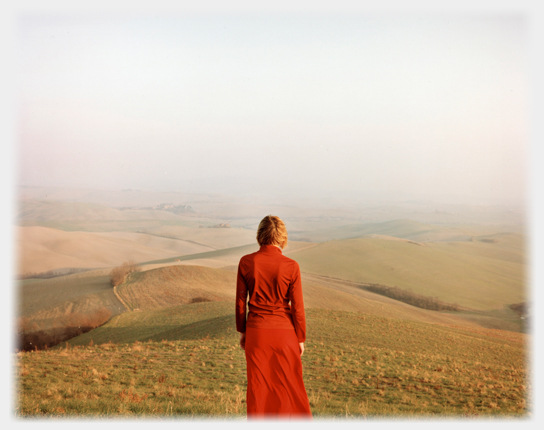
|
Self
David Hume noted the disjunction between our intellectual and non-intellectual lives: the fact that these two modes of life often fail to connect. It is more as though we are actors setting aside one role in which for example we consider the philosophical implications of an idea, and taking up another role in which we engage in a game of billiards, and of course this dramaturgical metaphor has been richly explored in sociology by writers following Goffman.
Discussions of the 'self' seem particularly relevant to this disjunction. Normally we regard these different roles, and many others, as aspects of a single person. That person being the self with which we are supposed to be so very familiar. Hume voiced his unease at not being able to find any sign of this self when he sought it. Within his complex discussion of personal identity he writes; "The identity, which we ascribe to the mind of man, is only a fictitious one ..." For him there was the role of being engaged (for example) in philosophical debate, and the role of playing snooker, but what linked the two roles seemed curiously insubstantial compared with the actual roles. However much we try to catch the self (the actor of normal discourse), he suggests, it seems to slip away and we find only a mysteriously linked set of experiences; ineffably linked. His puzzlement has been very fruitful.
One of the most fundamental jobs our minds do is to unify experience; to make experience seem as though it takes the form of a story which unfolds in a logical and largely consistent manner. Famously it is Kant who so brilliantly showed us that what we are conscious of is a unity resulting from processes of our minds and that it does not necessarily (or at very least not indisputably) reflect any unity in some external or other world.
Kant's insights were profound and are echoed this century by such diverse workers as the neuroscientist Vilayanur S. Ramachandran whose 2003 Reith Lectures introduced us to his fascinating explanations of how we construct our worlds and our 'selves'; and the clinical psychologist, Jeffrey Gray, with his comparator model of consciousness. These workers with backgrounds far removed from philosophy, point to a large body of experimental evidence which challenges our normal conception of a single unified world and a single unified self, and shows how these unities are generated by our mental apparatus, and that not least amongst such products is the very concept of self, the concept that troubled Hume.
It is not only recent explanations which seem to loosen the tight clutches of the self on our imaginations. Most of us in the West use languages which stem relatively recently from Sanskrit. Our languages clearly bear the marks of that root, and we use grammars based on it. We easily see objects and subjects, you and I, verb and noun. But these structures are not basic to all families of languages.
A simple example is relevant here. We are used to having one set of pronouns such as the English 'I', 'me' or 'you' which depict individual persons. These pronouns are endlessly repeated: how many times in our lives do our words repeat to us this mantra of individuals and selves? In Vietnamese, as in other languages belonging to the Chinese family, 'pronouns' do not normally denote individuals, but rather roles or relationships. We are uncles, sons, nephews and cousins, and all of these and much more besides. As we address each person we must switch the pronoun we use for denoting ourselves, choosing from a range of relationships whichever is the best one for our interlocutors. To this person we say 'your father wishes', to the next 'your teacher wishes', and to the next 'your brother wishes'. Could it be that we in the West are a little dulled by incessant repartition of the individualistic 'I's and 'You's and too easily accept belief in them?
In such languages the diversity of our social lives is not welded together into a unity as it is by Western pronouns such as 'I' and 'you'. Vietnamese concerns itself with relationships rather than individuals, with those roles with which this page started, and not about any hidden, and possibly problematic, philosophical or psychological 'self'. This helps us question the dramaturgical metaphor: how appropriate is the idea of an actor (self) taking on roles (personae)? And is there not a better metaphor in, say, the notion of visitors to a room, some more frequent than others, but all equally personae not selves?
The edifice we call self is being questioned from different directions. It is implicitly questioned by languages like Vietnamese which hinges on relationships rather than individuals; it is overtly questioned in the writings of philosophers such as Hume who could not find the 'self' in his reflections; and modern neurophysiological research challenges the way that we assume the 'self' is constructed. Together these may give us pause; possibly they even prevent us from assuming that our 'selves' form an unquestionable axiom of experience. And maybe they will lead us to look with interest at alternative ways of seeing consciousness which is not 'self centric'.
References
- After 'Wanderer above the Sea of Fog' (also known as 'Wanderer Above the Mist') (German: 'Der Wanderer über dem Nebelmeer') which is an oil painting of 1818 by the German Romantic artist Caspar David Friedrich. Other images of his can be seen here.
- Hume, David (1739) 'A Treatise of Human Nature' John Noon, London. Edited Selby-Bigge (1888) Oxford. (Book I, Section 6, p. 259)
28th August 2014 ~ 25th July 2015